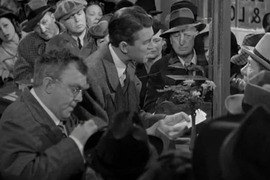
Panic of 1907
The Panic of 1907 stands out among history’s financial and economic disturbances. The Panic of 1907 was the first worldwide financial crisis of the twentieth century. It is also known as the Knickerbocker Crisis, after the Knickerbocker Trust, one of the largest banks in New York. In October 1907, the New York Stock Exchange witnessed a sharp 50% decline that wrecked havoc throughout America's banking system, second only in severity to the Great Crash of 1929. The was marked by a severe banking panic and a massive collapse in the stock market. It led to widespread bank failures, a sharp contraction in economic activity, and had long-lasting effects on the financial system. The Panic of 1907 played a pivotal role in the evolution of the U.S. financial system. It showed the vulnerabilities of a banking system that lacked a central bank to provide stability in times of crisis. The establishment of the Federal Reserve was a direct response to the need for a more robust system to address banking crises and provide stability during financial stress.
ABOUT THE PANIC OF 1907
The Panic of 1907 was caused by a build-up of excessive speculative investment driven by loose monetary policy.
A significant part of the crisis was due to the failure of certain trust companies that had been taking on excessive risks. The Knickerbocker Trust Company, a large trust in New York, was one of the first major casualties.
The U.S. Treasury was forced to step in to prevent further collapse, including the issuance of emergency funds to stabilize the banking system.
One of the most notable figures during the Panic of 1907 was J.P. Morgan, taking charge of coordinating a rescue effort to provide liquidity to struggling institutions.
KEY EVENTS
October 1907.
The crisis began to unfold in earnest after a failed attempt by two investors, Charles W. Morse and F. Augustus Heinze, to corner the market in United Copper stocks. It caused a chain reaction that triggered the panic.
October 22, 1907.
The Knickerbocker Trust Company was forced to shut down after depositors made mass withdrawals.
J.P. Morgan's Intervention.
In the face of widespread bank runs, J.P. Morgan, at the time one of the most powerful figures in American finance, brokered a series of deals to shore up confidence in the system
November 1907.
By the end of November, the panic had largely subsided, although it took several more months for the economy to stabilize.
The panic's impact led to the eventual development of the Federal Reserve System.
One of the most significant long-term effects of the Panic of 1907 was the recognition that the U.S. needed a more centralized and organized monetary system to manage financial crises.
The establishment of the Federal Reserve was a direct response to the need for a more robust system to address banking crises and provide stability during financial stress.
The newly created Federal Reserve would act as a central prudential authority, controlling the nation's supply of money and credit and serving as lender of last resort to bail out over-leveraged, insolvent, and otherwise at-risk financial institutions.
